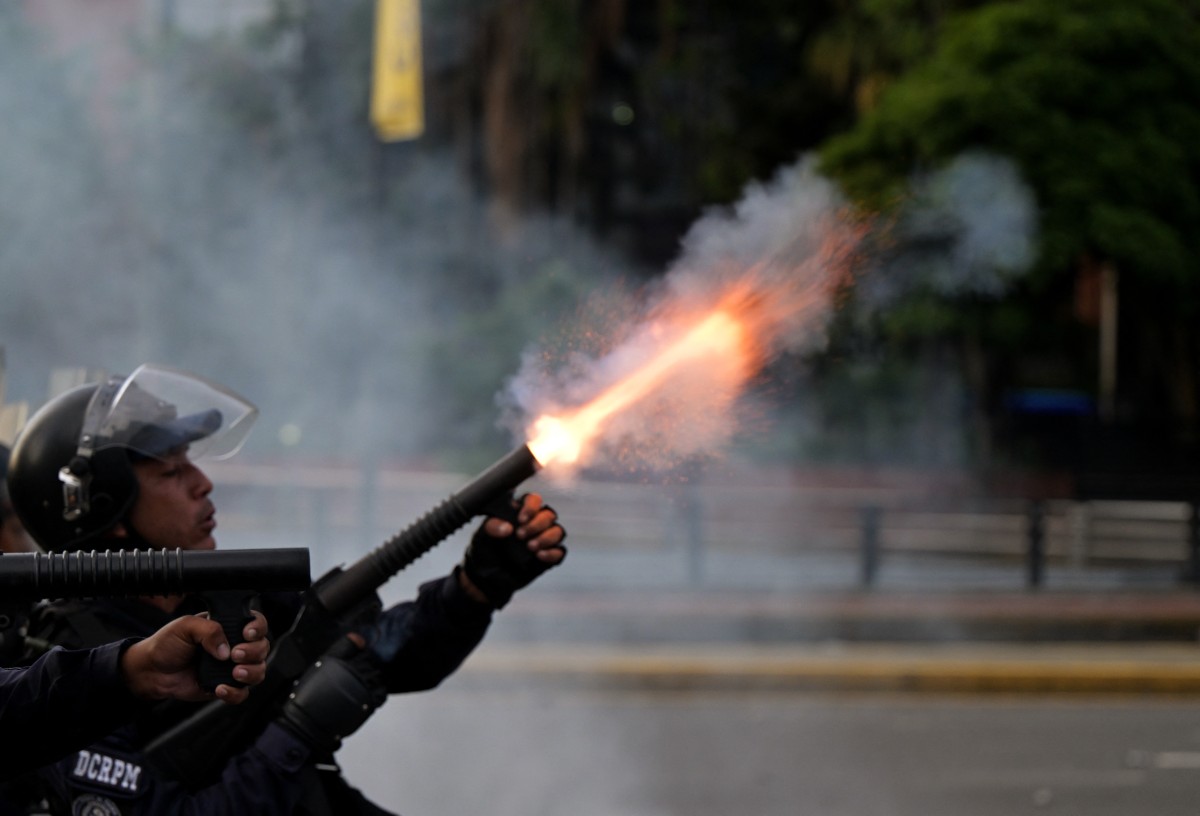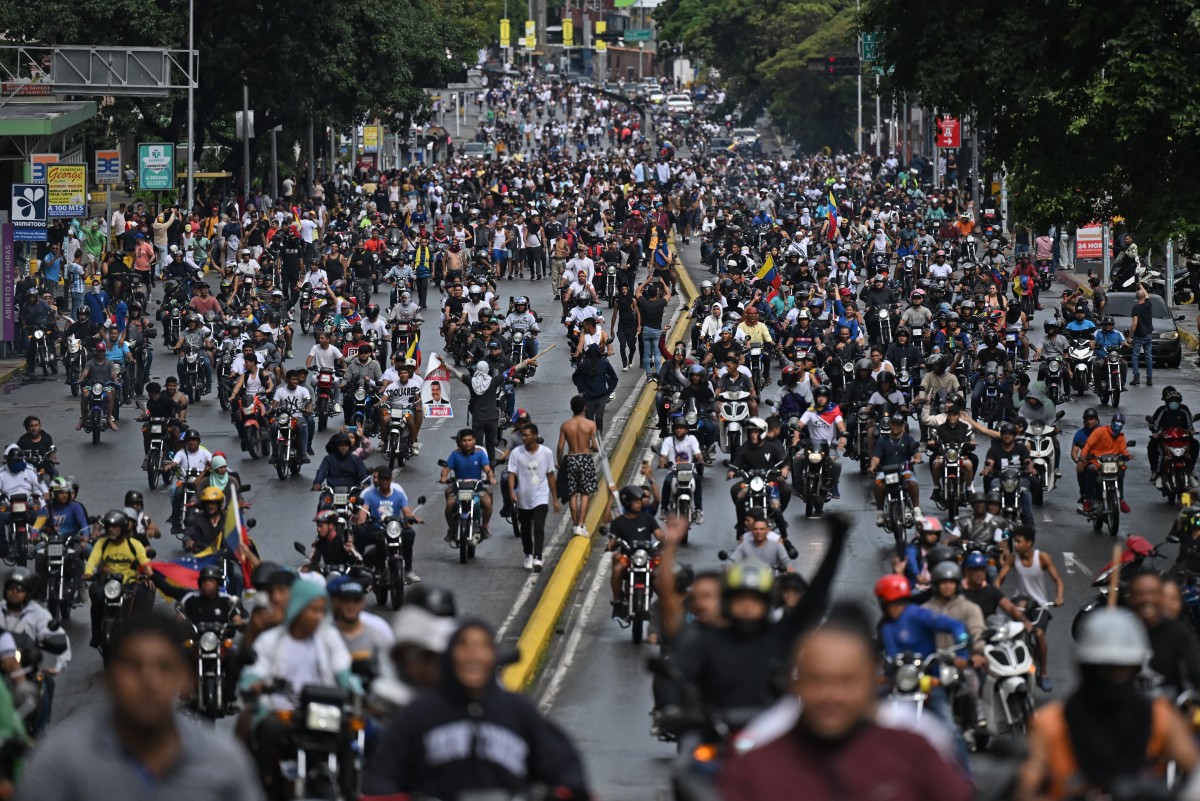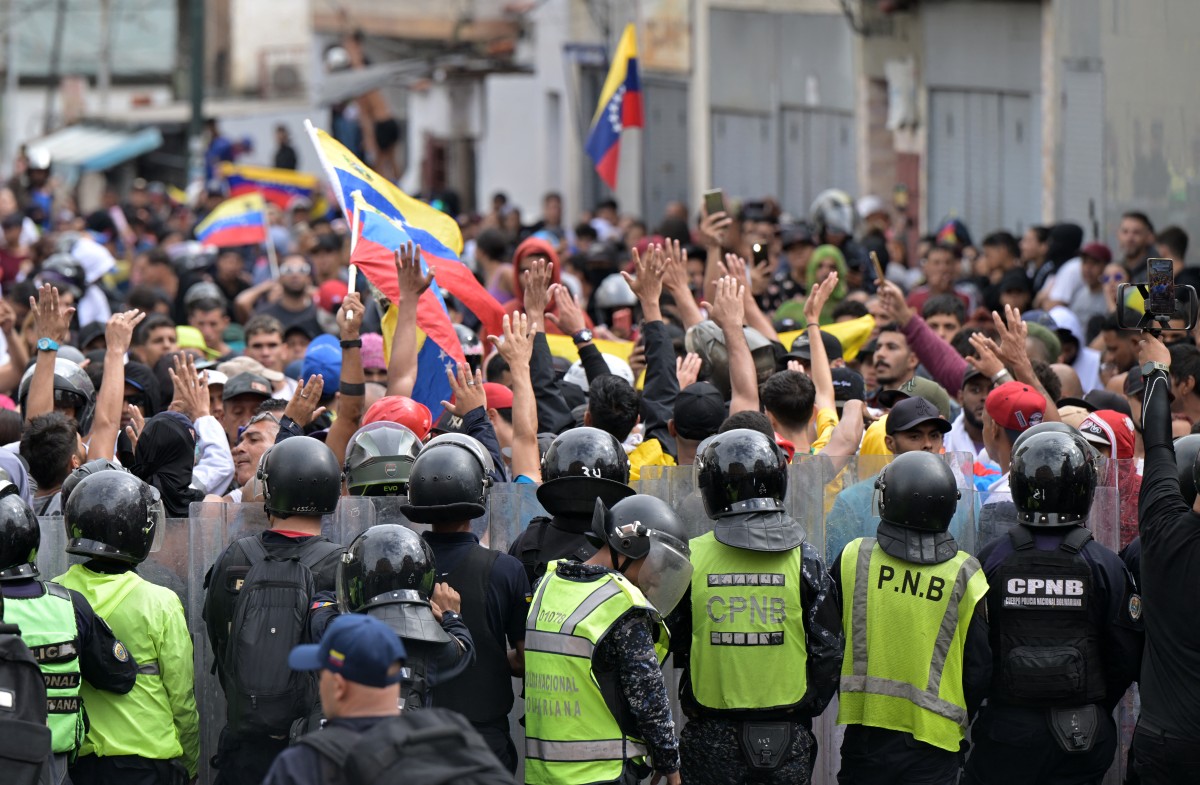What the UN Mission reveals about deaths in protests after the presidential elections in Venezuela

The independent international UN Mission for Venezuela documented a series of incidents that occurred between July 28 and 30, leaving at least 25 people dead. Of these deaths, at least 24 were caused by gunshots and one occurred as a result of a beating.
“The Mission carried out independent work of documentation, verification and investigation of these deaths,” the document states. reportreleased in full this Tuesday, October 15, where “detailed conclusions on the serious human rights violations and crimes committed in Venezuela against opposition people or perceived as such during the period between September 1, 2023 and August 31, 2024.”
“The Mission’s investigations focused on serious human rights violations explicitly mentioned in the mandate granted to it by the Human Rights Council (such as extrajudicial executions, forced disappearances, arbitrary detentions, torture and other cruel, inhuman treatment). or degrading, including sexual and gender violence),” it indicates.
Remember that “the period covered by the report was marked by the process leading to the presidential elections of July 28, 2024.”
What does the UN Mission report say about deaths in protests after the presidential elections in Venezuela?
At the time of concluding the report, the Mission identified the 25 deceased. It also determined where the events occurred, as well as the cause of the deaths, although no “conclusive determinations regarding responsibility for the deaths” were reached.
The Mission indicates that the investigation into the events was limited by the general fear of witnesses and family members, who even received threats that the bodies of their loved ones would not be handed over to them if they gave information to third parties.
Although the UN Mission documented 25 deaths, it indicates that the authorities have not been clear with the figure, reporting other deaths of soldiers or PSUV sympathizers at different times that could not be corroborated.
All the victims were male. 68% were under 30 years of age. Two of the victims were children, one 15 years old and the other 17 years old.
Almost all of the victims were residents of low-income neighborhoods. Among the people who died were workers, motorcycle taxi drivers, barbers and small merchants.
One of the deaths was that of Sergeant José Antonio Torrents Blanca, an official of the Bolivarian National Guard. The death of a second agent, Yorman Martínez, reported by prosecutor Tarek William Saab, could not be documented by the Mission.
Torrents died on July 29 in a protest in Maracay. According to the attorney general, he was murdered by “terrorist groups” or “criminal groups instrumentalized by the so-called commandos.” Other versions suggest that the sergeant’s death was caused by shots from the Army or the GNB, who came to repress the protest.
| Name | Gender | Age |
| Isaías Jacob Fuenmayor González | Male | 15 |
| Angel David Mora | Male | 17 |
| Jeison Gabriel Spain Guillén | Male | 18 |
| Anthony Enrique Cañizalez Gareta | Male | 19 |
| Luis Eduardo Roberto Hernandez | Male | 19 |
| John Alejandro Graterol Mendoza | Male | 19 |
| Anthony David Moya Mantia | Male | 20 |
| Jesus Gregorio Tovar Perdomo | Male | 21 |
| Dorian Rair Rondón | Male | 22 |
| Jeison Javier Bracho Martínez | Male | 22 |
| Olinger Johan Montaño López | Male | 23 |
| Euris Junior José Mendoza Royé | Male | 24 |
| José Antonio Torrents Blanca | Male | 26 |
| Aníbal José Romero Salazar | Male | 26 |
| Carlos Oscar Porras | Male | 26 |
| Gustavo Rojas | Male | 29 |
| Walter Paez Lucena | Male | 29 |
| Rancés Daniel Yzarra Bolívar | Male | 30 |
| Gabriel Ramos | Male | 33 |
| Victor Alfonzo Bustos | Male | 34 |
| Yorgenis Emiliano Leyva Méndez | Male | 35 |
| Andrés Alfonso Ramírez Castillo | Male | 36 |
| Julio Valerio García | Male | 40 |
| Edgar Alexander Aristeguieta | Male | 42 |
| Jesus Ramon Medina Perdomo | Male | 56 |
Most of the protests were peaceful
The UN Mission points out that it “found that a large part of the protests took place in a peaceful atmosphere.” In the protests where acts of violence occurred, the Mission indicates that protesters threw Molotov cocktails, bottles and stones, and carried sticks and other blunt objects.
The first death, as documented by the Mission, occurred on the night of July 28 in the Guásimos municipality, Táchira state, in the vicinity of a voting center. On July 29, another 20 fatal incidents occurred. Four more episodes took place on July 30. “Since then the Mission has not recorded new incidents that caused deaths,” he points out.
Capital District and Aragua were the most affected, with 8 (32%) and 7 deaths (28%).
Responsibility of security forces
Of the 25 documented deaths, the UN Mission indicates that 24 were caused by gunshot wounds and one by blows. The type of ammunition fired does not appear in the death certificates and certificates.
The attorney general initially attributed all of the deaths “to the criminal groups instrumentalized by the so-called commandos”. He also held María Corina Machado and Edmundo González responsible as the intellectual authors of these events.
On August 21, however, Tarek William Saab detailed that “of all the victims, 70% were murdered by criminal groups.” He said that none of the deaths were attributable to the security forces because there were no complaints.
He also indicated that violent protesters burned buildings with people inside, which the Mission was unable to document.
The information is collected by the Special Monitoring Mechanism for Venezuela (Meseve) of the Inter-American Commission on Human Rights, points out that 10 deaths are linked to security forces (8 with the FANB and 2 with the Police), 6 with groups and 2 with “mixed actions between state forces and non-state groups.” .

Opponents of Nicolás Maduro’s government protest in Caracas on July 29, 2024, one day after the Venezuelan presidential elections. Photo: RAÚL ARBOLEDA / AFP
What the UN Mission says about the presence of armed groups
The Mission analyzed an incident that occurred in Caracas on July 29 in the afternoon, on Urdaneta Avenue, in front of Santa Capilla, a few meters from Miraflores:
“In that incident, the Mission was able to verify how a group of PNB officials, with means to control public order (helmets, protective shields and tonfas) and in formation, prevented the passage of people who were demonstrating, while a group of armed civilians detained some protesters and shot them with pistols.”
“At one point, the PNB officials withdrew a few meters from the scene, allowing the armed civilians to continue shooting. As they ran out of ammunition, some of the civilians even changed the suppliers of their weapons and returned to shooting in the direction of the protesters. “All this happened with the acquiescence of the PNB, which left them to act with total freedom.”
However, the Mission “with the information obtained and investigated” does not reach “a conclusive determination on the responsibility of the security forces, with or without the accompaniment of armed civilians in the 25 deaths that occurred.”

Opponents of the government of Nicolás Maduro protest in front of members of the Bolivarian National Police in Catia, Caracas, on July 29, 2024, one day after the Venezuelan presidential elections. Photo: Yuri CORTEZ / AFP
Independent journalism needs the support of its readers to continue and ensure that the uncomfortable news they don’t want you to read remains within your reach. Today, with your support, we will continue working hard for censorship-free journalism!



